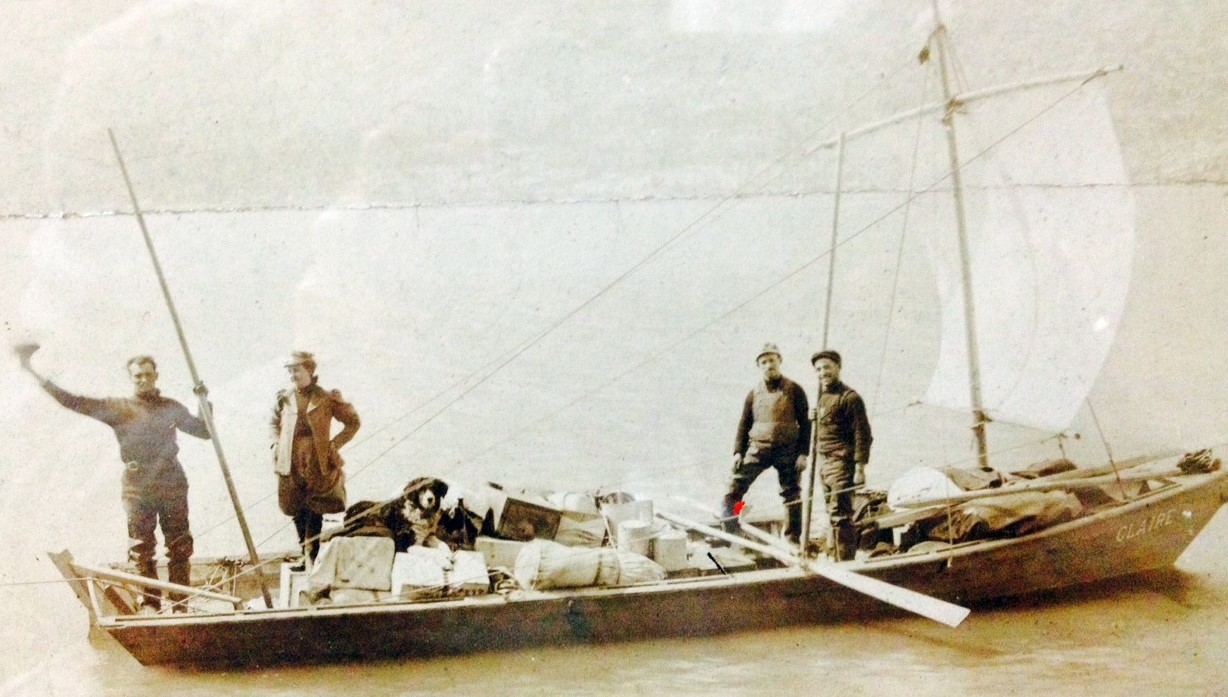For a half century, Mayer Brothers was the most important manufacturing jeweler in Seattle. But it all started with the Klondike Gold Rush in 1897.
When the steamer Portland arrived in Seattle on July 17, 1897 with a ton of gold, someone needed to turn that gold dust into nuggets and bars. There was no official government office to do it in Seattle, and the only jeweler set up for it was Mayer Brothers, located near the waterfront on the corner of 2nd and Cherry.
The Mayer brothers – Joseph, Markus, and Albert – decided to get closer to the source of the gold. They would set up shop in Dawson, Northwest Territories, Canada, and directly serve the gold rushers of the Klondike and Yukon.
Rush to Dawson
Surprisingly, youngest brother Markus Mayer was already in Alaska in September, two months after the Portland arrived in Seattle. According to the Seattle PI he and a travel partner were struggling up the trail: “Lew Garfinkle and Marcus Mayer, of Seattle, are still this side of the [White Pass] summit, and will divide their outfit and make an effort to get one of them in.” The 1896 Seattle city directory tells us that Garfinkle was a Mayer Brothers employee.
The September article was titled THESE HAVE CROSSED, a long and crazed description of trail conditions and the stampeders traveling them by a Seattle attorney in their midst. He had this to say about the treacherous White Pass, which Markus Mayer was trying to cross: “No one has yet gotten over without losing one or more of his horses, and the total loss of horses has been appalling. On Wednesday of last week fifty-two were lost, and the average loss has been estimated at twenty-five a day.”
Based on later events, it seems that Markus and Lew got enough supplies for one person to the summit, and then Lew went ahead alone to Dawson. Then in Dawson Lew set up a jewelry and pawn shop. Markus stayed behind at Skagway preparing for the next Spring.

Sam Archer’s Interlude
Further down the article THESE HAVE CROSSED I stumbled on a very familiar name: “The Seattle party, composed of A. Baker, formerly deputy sheriff; Sam Archer and Charles Kalberg are similarly situated [at the summit].”
Sam Archer! I wrote about him in my very first article for Capitol Hill Seattle Blog. Along they way I found Sam Archer’s autobiography at Alaska State Library, describing his trip over the pass and down the lakes. It’s the context I had in mind as I researched the Mayers. So it’s quite a coincidence that two separate lines of research should lead to the same spot!
Comes Albert Mayer
In April 1898 the Seattle PI described a trip by several steamers headed to Skagway in the Klondike. On board the Al-Ki was Markus’ brother Albert Mayer with his wife Leah.
Canadian border crossing records show that Markus and Albert made it over Chilkoot Pass in June 1898 and headed to Dawson. The previous summer Klondikers were already giving up on White Pass and struggling over Chilkoot instead.

We know something about 1897 to 1898 from a Seattle P-I article “Gold Dust in Court” from July 1899. It described a lawsuit by Joseph, Albert and Markus against Lew Garfinkle and his mother back in Seattle. It said that Garfinkle was sent to Dawson with watches and money. There he sold the watches, used the money to do new business and generated $20,000. Garfinkle arrived in Seattle in 1899 with his mother and 20 pounds of gold dust, and did not cut Mayer Brothers in.
Albert and Markus took over the Dawson store in 1898. They were very successful, and brought the rewards back to their expanding business in Seattle. But the rest of the story is for another time.
Where to read the rest
The photos came from research and correspondence by my friend Paul Middents. Paul and I found the border crossing records in at some point, giving a glimpse at the Mayers in the Klondike.
The rest of the story will be in Paul’s book. See, Paul passed away last year. He left a draft of a book about Mayer Brothers, their manufacturing jeweler, and the clocks of Joseph Mayer. While working to complete that book I found the rest of this story and decided that it stands on its own. So I’ve shared it as a bit of a preview.
What else to read
More about Seattle and the Klondike:
More about Mayer Brothers in my articles about Seattle’s street clocks:
- Street Clocks and Stacy Shown’s Showns
- The Curious Case of the Central School Clock
- Blueprints of Seattle’s Street Clocks
- Time to Daylight and Save Time in Seattle
- Where Seattle’s Street Clocks Were
- Time Travel to Pike’s Forest of Clocks
- Time Travel to West Seattle
- Seattle Street Clock Inventories, 1920s
- A Broadway clock that tells history, not time (on CHS)
- The original Seattle Clock Walk
- The City-Wide list on the clock walk site.
Discover more from ba-kground
Subscribe to get the latest posts sent to your email.
